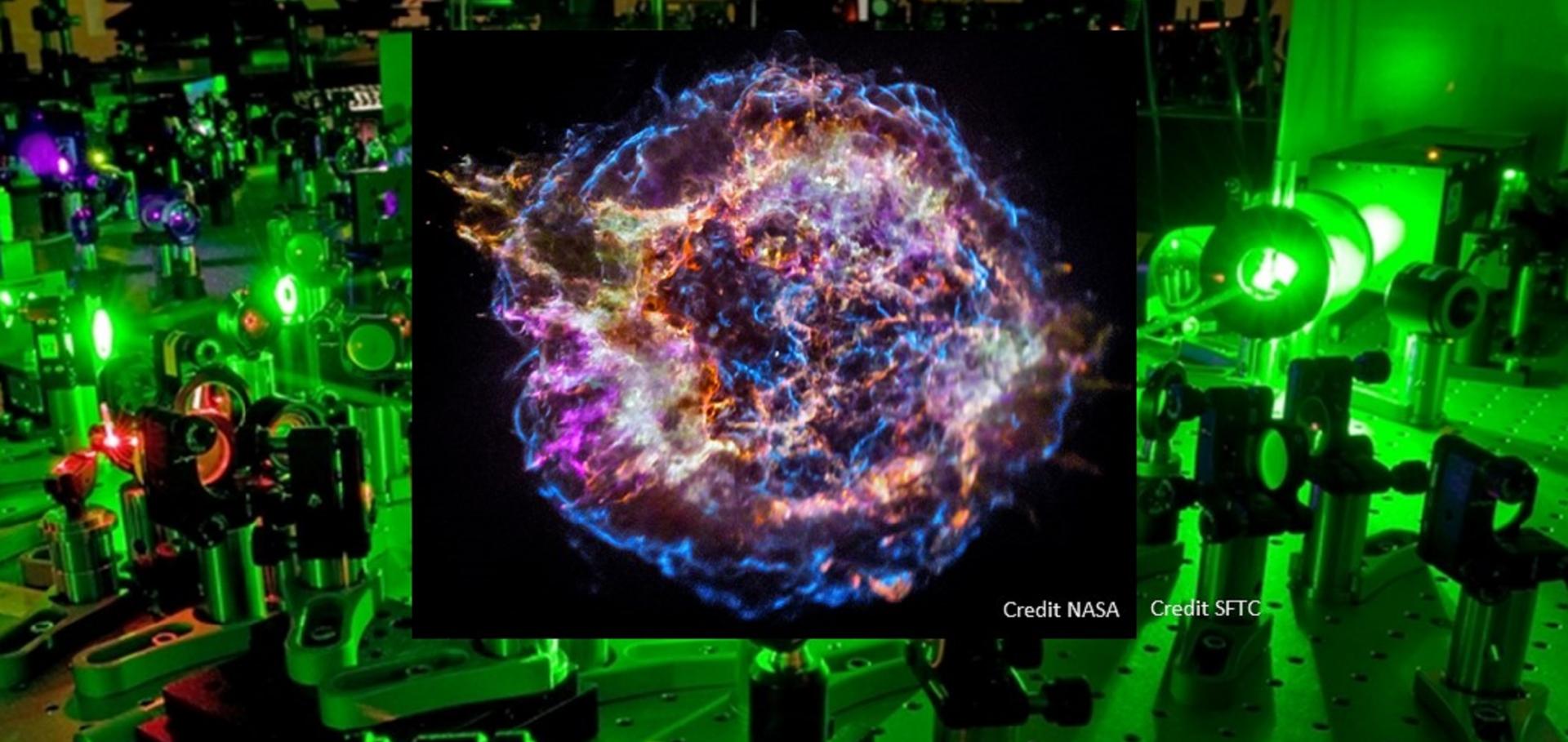Modeling HEDLA magnetic field generation experiments on laser facilities
High Energy Density Physics 9:1 (2013) 172-177
Abstract:
The Flash Center is engaged in a collaboration to simulate laser driven experiments aimed at understanding the generation and amplification of cosmological magnetic fields using the FLASH code. In these experiments a laser illuminates a solid plastic or graphite target launching an asymmetric blast wave into a chamber which contains either Helium or Argon at millibar pressures. Induction coils placed several centimeters away from the target detect large scale magnetic fields on the order of tens to hundreds of Gauss. The time dependence of the magnetic field is consistent with generation via the Biermann battery mechanism near the blast wave. Attempts to perform simulations of these experiments using the FLASH code have uncovered previously unreported numerical difficulties in modeling the Biermann battery mechanism near shock waves which can lead to the production of large non-physical magnetic fields. We report on these difficulties and offer a potential solution. © 2012 Elsevier B.V.Simulation of laser-driven, ablated plasma flows in collisionless shock experiments on OMEGA and the NIF
High Energy Density Physics Elsevier 9:1 (2013) 192-197
Cosmic ray acceleration in young supernova remnants
Monthly Notices of the Royal Astronomical Society 435:2 (2013) 1174-1185
Abstract:
We investigate the appearance of magnetic field amplification resulting from a cosmic ray escape current in the context of supernova remnant shock waves. The current is inversely proportional to the maximum energy of cosmic rays, and is a strong function of the shock velocity. Depending on the evolution of the shock wave, which is drastically different for different circumstellar environments, the maximum energy of cosmic rays as required to generate enough current to trigger the non-resonant hybrid instability that confines the cosmic rays follows a different evolution and reaches different values.We find that the best candidates to accelerate cosmic rays to ~ few PeV energies are young remnants in a dense environment, such as a red supergiant wind, as may be applicable to Cassiopeia A. We also find that for a typical background magnetic field strength of 5 μG the instability is quenched in about 1000 years, making SN1006 just at the border of candidates for cosmic ray acceleration to high energies. © 2013 The Authors Published by Oxford University Press on behalf of the Royal Astronomical Society.Diffusive shock acceleration at laser-driven shocks: Studying cosmic-ray accelerators in the laboratory
New Journal of Physics 15 (2013)


